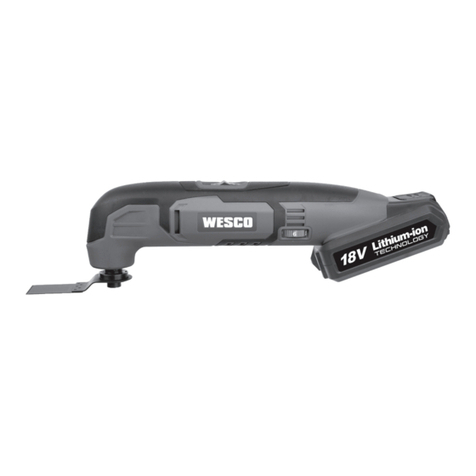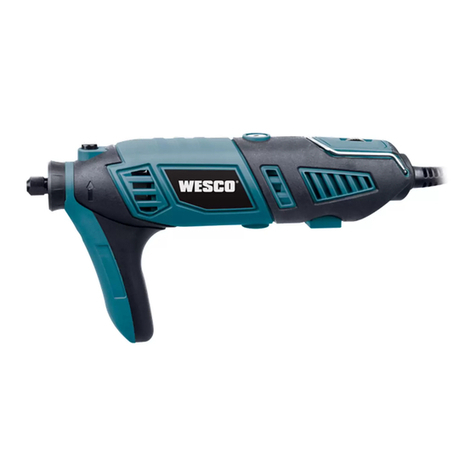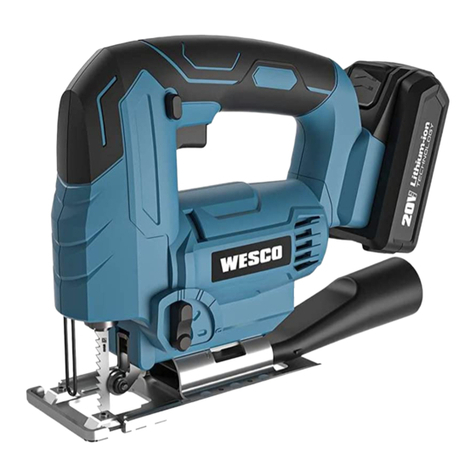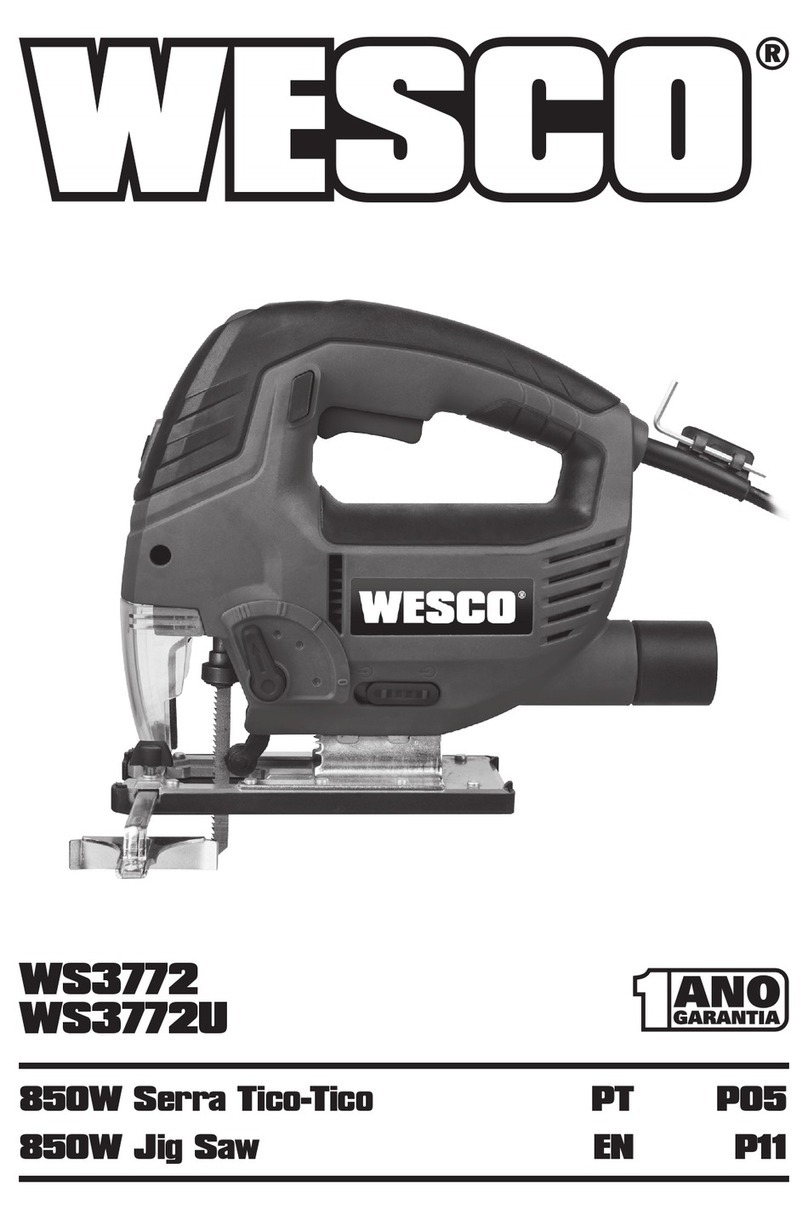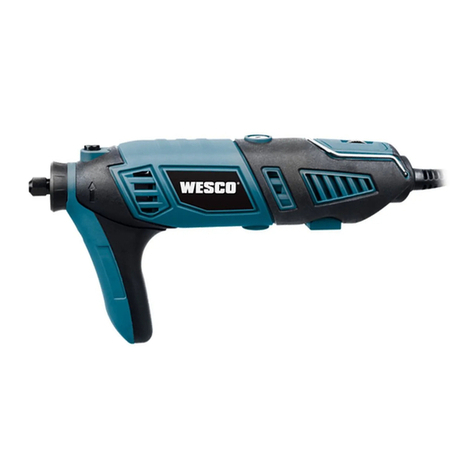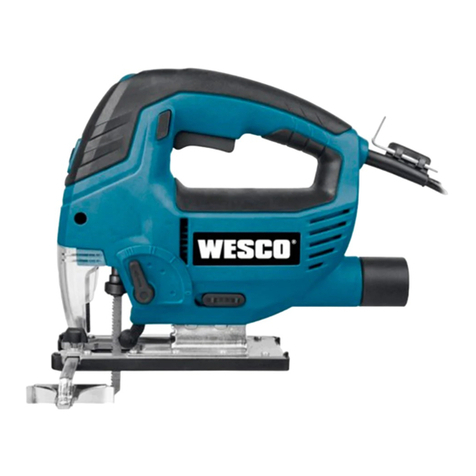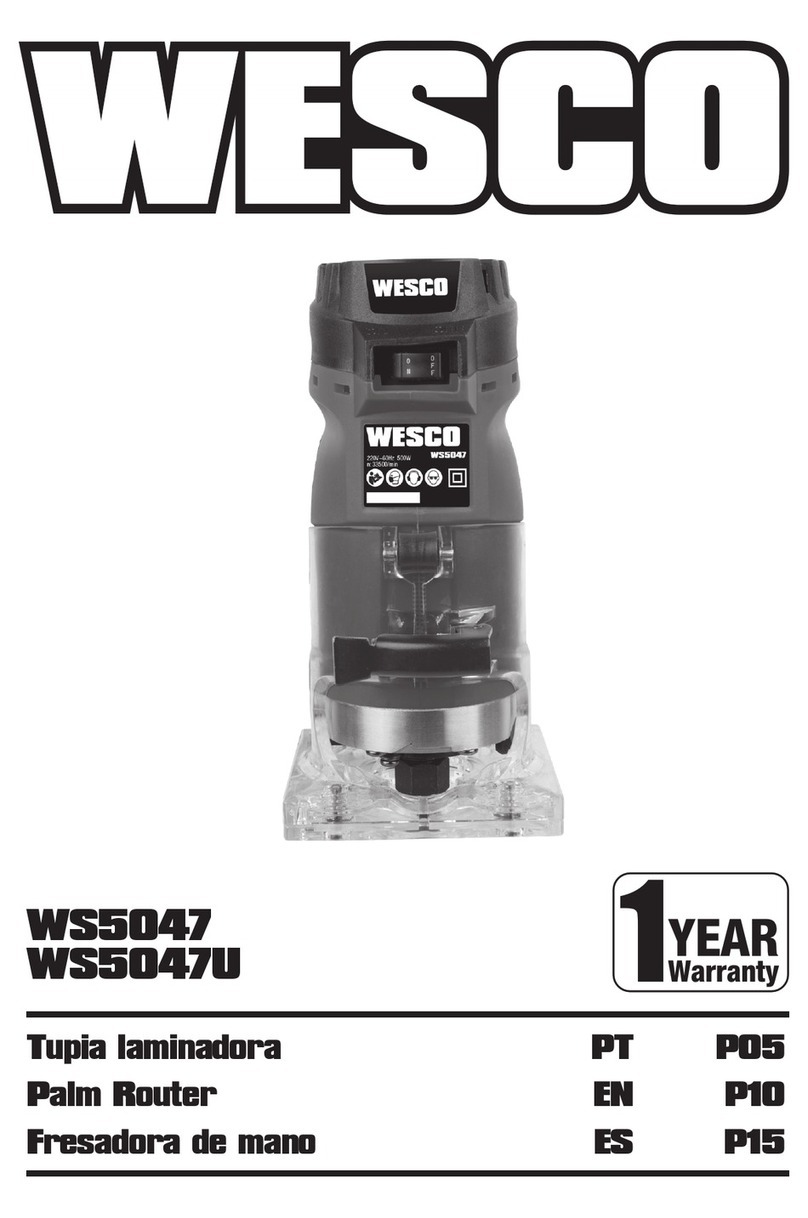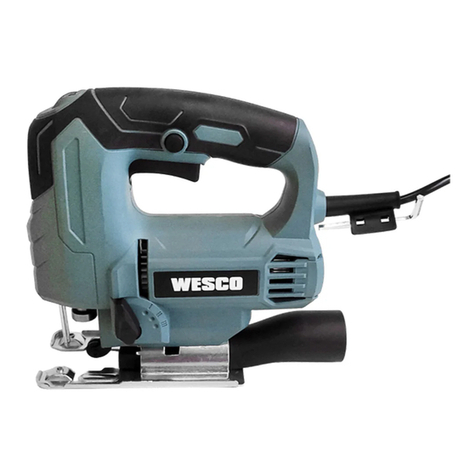
7
PT
DESLIGAR:
Para desligar, deslize o interruptor liga/desliga (5) para a
parada na posição 0.
Após trabalhar por um tempo mais longo em alta
temperatura, permita que a ferramenta resfrie operando na
configuração de ar frio 1 antes de desligar.
2. DESLIGAMENTO POR PROTEÇÃO
TÉRMICA
Se o aquecedor superaquecer (por exemplo, devido à
restrição do volume de ar), a ferramenta o desligará
automaticamente, mas o soprador continuará em operação.
Quando a ferramenta tiver resfriado para a temperatura de
operação, o aquecedor será ligado novamente.
3. CONFIGURAÇÃO DO VOLUME DE AR E DA
TEMPERATURA
O interruptor (5) pode ser definido para três níveis de
soprador. Combinações adequadas de volume de ar e
temperatura podem ser selecionadas de acordo com as
aplicações.
1 = 40 ℃,300 L/MIN
2 = 350 ℃,300 L/MIN
3 = 550 ℃,500 L/MIN
A configuração de ar frio 1 é adequada para resfriar uma
peça de trabalho aquecida ou para a secagem de tinta.
Também é adequada para resfriar a ferramenta antes de
deixar de usá-la ou de trocar os bocais.
A configuração de ar 2 é adequada para moldar plástico e
aquecer plástico termorretrátil.
A configuração de ar 3 é adequada para remoção de tinta e
descongelamento de tubos.
4. BOCAIS
O kit é fornecido com 4 bocais de diferentes formatos que
podem ser usados conforme a seguir:
1) BOCAL DE PONTA (VER FIG.A)
Esse bocal direciona um fluxo de calor concentrado para a
peça de trabalho. Ele é ideal para remover tinta de cantos
difíceis, fendas, molduras, chanfros ou sempre que a
remoção de tinta precisa for necessária.
2) BOCAL PLANO(VER FIG.B)
Esse bocal direciona um padrão de calor longo e estreito
para a peça de trabalho e é ideal para remover tinta ou
verniz de grandes superfícies planas, como rodapés, portas,
escadas, etc. Ele deve ser usado com um raspador plano.
Ladrilhos de vinil podem ser removidos amolecendo o
ladrilho e o adesivo.
3) BOCAL DE DESVIO(VER FIG.C)
Esse bocal deflete o calor para longe do vidro ou de outras
áreas frágeis e retorna à peça de trabalho.
4)BOCAL DE DEFLEXÃO(VER FIG.D)
Esse bocal dispersa o fluxo de calor por igual em toda a
peça de trabalho. Ele é ideal para descongelar tubulações
congeladas, soldar tubos, moldar materiais plásticos e
retrair peças elétricas.
5) RASPADOR(VER FIG.E)
Pegue o cabo do conjunto, remova a porca da extremidade
e encaixe a lâmina triangular recolocando e apertando a
porca. O raspador é ideal para remover tinta de superfícies
de madeira planas e bordas.
Lembre-se de limpar a lâmina após o uso com palha de aço
e lubrificar levemente antes de guardar.
5. REMOÇÃO DE TINTA
Escolha o bocal necessário e encaixe na saída de
calor. Selecione o raspador necessário. Mantenha o
soprador com o bocal aproximadamente 50 mm (2
polegadas) da superfície do trabalho de pintura e inicie
com a configuração de temperatura mais baixa. Mova-o
lentamente para trás e para frente até que a tinta empole e
borbulhe. Remova a tinta imediatamente com o raspador.
Aponte para aquecer a tinta logo à frente do raspador
para que você possa desenvolver uma ação contínua. Não
aqueça a tinta por muito tempo, pois isso a queimará,
dificultando sua remoção.
A maioria dos adesivos também pode ser removida da
pintura usando o calor para amolecer o adesivo. Tome
cuidado para não direcionar o calor por muito tempo se
estiver apenas tentando remover os adesivos, pois isso irá
empolar a tinta.
6. REMOÇÃO DE TINTA DE ESQUADRIAS DE
JANELAS
Sempre use o bocal de desvio. Antes de ligar, assegure
que o bocal esteja voltado para a direção certa para defletir
o calor do vidro. Gire o soprador ou o bocal para 900 à
medida que você se desloca para chanfro horizontal ou
vertical. Aguarde o bocal resfriar antes de tentar virá-lo.
Tinta pode ser removida de superfícies de perfis usando-se
um raspador e/ou uma escova de aço macia.
Aviso:Vidro pode quebrar facilmente.
